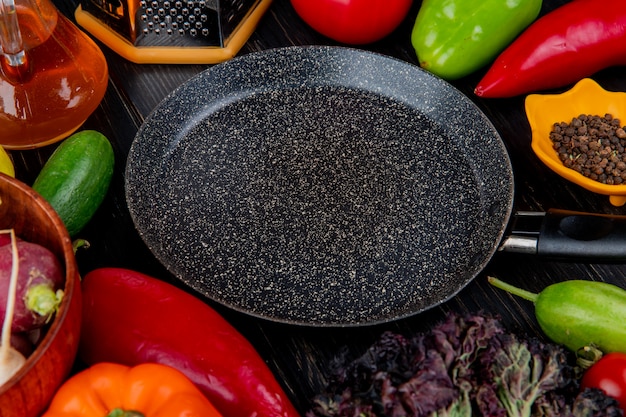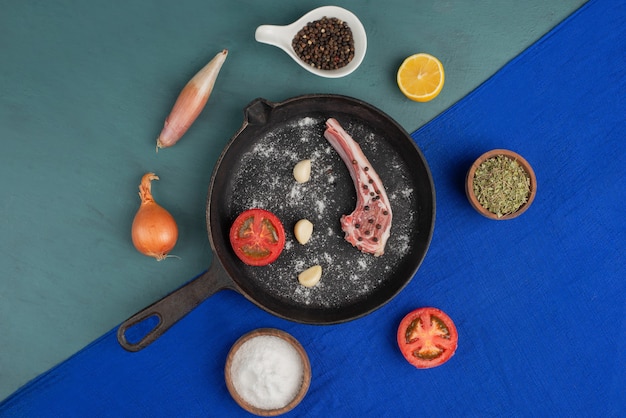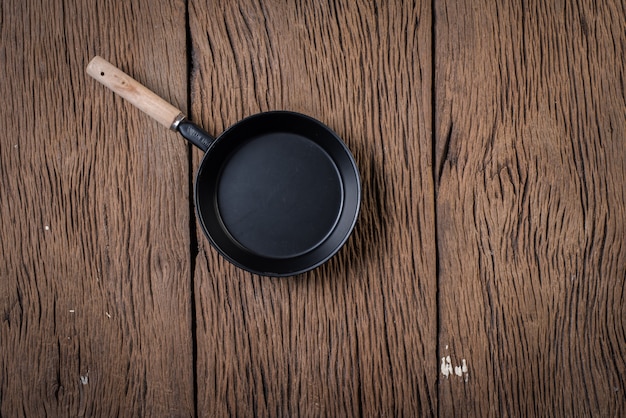You've got yourself a cast iron skillet, haven't you? You've probably heard all the rave reviews about how they're the ultimate cooking companions, and you're eager to get started. Well, let me tell you, all the hype is true! These skillets are absolute workhorses, capable of whipping up everything from a simple weeknight dinner to a gourmet feast that'll impress even the fussiest of guests. They're like a trusty old friend, always there for you, whether you're making a quick breakfast or a slow-cooked masterpiece.
Now, I'm not promising you'll become a Michelin-star chef overnight, but I am saying that a cast iron skillet in your kitchen unlocks a whole new world of culinary possibilities. I've been using them for years, and I've learned a thing or two about how to get the most out of these remarkable pieces of cookware. So, grab a cuppa, get comfy, and let's delve into the fascinating world of cast iron skillet cooking!
(Part 1) The Cast Iron Skillet: A Love Story

My first cast iron skillet was a treasured hand-me-down from my grandma. It had seen its fair share of use, sporting a few patches of rust and a handle that was a bit wobbly. But even then, I knew this was something special, a piece of history that carried generations of family meals and memories. And it wasn't just family history, it was cooking history. cast iron skillets have been around for centuries, and for good reason - they're incredibly durable, heat-resistant, and they infuse your food with a unique flavour that you simply can't get from other cookware.
Over the years, I've collected a few more cast iron skillets, each with its own unique story. My favourite is a beautiful antique, with a deep, heavy base and a smooth, seasoned surface that gleams like a polished gem. It's a true beauty, and I wouldn't trade it for anything. But even my newest skillet, a modern one I picked up at a local kitchen store, has quickly become a staple in my kitchen. I love how versatile cast iron skillets are. They're just as happy on the stovetop as they are in the oven, and even over a campfire. You can cook anything in them, from fluffy pancakes and runny eggs to perfectly seared steaks and succulent roasts. And the best part is, they just get better with time, like a good vintage wine.
(Part 2) Getting to Know Your Cast Iron: A Beginner's Guide

2.1 Seasoning: The Key to a Happy Skillet
Before you start whipping up culinary masterpieces in your new skillet, you need to give it some TLC – seasoning. It's a simple process that creates a non-stick surface, protects the iron from rust, and gives your food that irresistible crust. It's not as complicated as it sounds; it's really just about building up layers of oil, creating a protective shield on the surface.
Here's the breakdown of the most common seasoning method:
- Wash It: Give your skillet a thorough wash with hot soapy water, making sure to remove any debris. Then, dry it completely.
- Apply the Oil: Rub a thin layer of neutral oil (like canola or grapeseed) over the entire surface, including the handle, ensuring you get into all the nooks and crannies.
- Heat It Up: Place the skillet in a preheated oven at 350°F (175°C) for 1 hour. You'll notice the oil start to smoke, which is a sign that it's working its magic.
- Let It Cool: Let the skillet cool completely in the oven before removing it. This allows the oil to solidify and form a protective layer.
- Repeat: Repeat this process a few times, and you'll have a perfectly seasoned skillet that's ready for action.
Remember, a seasoned cast iron skillet is like a good pair of jeans; the more you use it, the better it gets. Just make sure you're always using a neutral oil for seasoning, and avoid using soap to wash it. The less you wash it, the better, really.
2.2 Cleaning: Less is More
While your grandma might have scrubbed her cast iron skillet with steel wool, we've learned that less is more these days. The best way to clean your cast iron skillet is to simply wipe it out with a paper towel or a clean cloth. If there are any stubborn bits left behind, you can use a wooden spatula or a soft brush to loosen them. And if there's something really stuck, you can add some coarse salt to the skillet, scrub it with a paper towel, and then wipe it clean. Avoid soaking your skillet in water, as this can lead to rust.
2.3 Storage: Keeping It Ready for Action
Once your skillet is clean and dry, store it in a cool, dry place. No need for fancy boxes or elaborate storage solutions. A simple paper towel lining the inside of the skillet is enough to keep it protected. And remember, a little bit of oil residue is actually good, as it helps to prevent rust.
(Part 3) Cast Iron Skillet Recipes: Flavours Galore

Now, let's get to the fun part - the recipes! Cast iron skillets are perfect for all sorts of dishes, from hearty stews to crispy grilled meats and vegetables. They’re especially great for dishes that need a little extra browning, like steaks, burgers, and paninis, thanks to their exceptional heat retention.
3.1 Classic Cast Iron Skillet Dishes
Here are a few of my favourite classic cast iron skillet recipes that are perfect for both beginners and seasoned cooks:
- pan-seared steak: This is the ultimate test of a well-seasoned skillet. The result is a juicy, tender steak with a beautiful crust that's practically begging to be devoured. I like to use a simple seasoning of salt, pepper, and garlic powder, but you can get creative with your favourite herbs and spices. The possibilities are endless.
- Cast Iron Skillet Chicken: Whether you're looking for crispy skin or a juicy breast, a cast iron skillet is your go-to. Pair it with your favourite side dish, like roasted vegetables or mashed potatoes, for a complete meal that's both satisfying and delicious.
- crispy potatoes: Roasted, fried, or even just pan-fried, potatoes are always tastier in a cast iron skillet. Their crispy edges and fluffy insides are a classic combination that's hard to beat.
- Cast Iron Skillet Pizza: Yes, you can bake a pizza in your skillet! The high heat and even heat distribution in a cast iron skillet result in a perfectly crisp crust and gooey cheese that's simply irresistible.
- Dutch Baby Pancake: This puffed-up pancake is a delightful treat, and it's easy to make in your cast iron skillet. Just mix up the batter, pour it into the hot skillet, and watch it rise into a beautiful, golden-brown pancake that's both visually appealing and incredibly delicious.
(Part 4) The Art of Bread Baking in a Cast Iron Skillet
I'll admit, I was a bit sceptical when I first heard about baking bread in a cast iron skillet. But let me tell you, it's a revelation! The heavy skillet creates the perfect baking environment, resulting in a crusty, airy loaf that's simply divine. And the best part? No need for fancy bread pans!
Here's the thing: cast iron skillets retain heat wonderfully, creating a warm oven-like environment for your dough to rise. This results in a bread with a perfectly crisp crust and a soft, fluffy interior that's just begging to be slathered with butter.
4.1 Tips for Bread Baking in a Cast Iron Skillet:
- Preheating: Before you even think about putting your dough in the skillet, preheat the oven and the skillet together. This creates a consistent heat distribution and allows your dough to rise beautifully.
- Grease the Skillet: Use a light coating of oil or butter to prevent sticking and ensure a beautiful golden-brown crust.
- The Right Dough: Choose a dough recipe that's meant for baking in a skillet or adjust your favourite recipe to account for the skillet's shape.
- Patience is Key: Give the dough ample time to rise and bake. The patience will be worth it, I promise.
Try baking your next loaf of bread in a cast iron skillet, and you’ll be amazed by the results. It’s a simple technique, but it elevates your bread baking to a whole new level.
(Part 5) Cast Iron Skillet Recipes: Beyond the Classics
Now, I know what you're thinking: “Cast iron skillets are great for classics, but what about something a little different?” Well, worry not, because the world of cast iron skillet recipes is a vast and exciting landscape just waiting to be explored. From global flavours to innovative dishes, there's a whole world of culinary adventure waiting for you.
5.1 Global Flavours in a Cast Iron Skillet
Cast iron skillets are the perfect tools for bringing the flavours of different cultures to your table. Here are a few examples:
- Paella: This Spanish rice dish is a real crowd-pleaser, and it’s easy to make in a cast iron skillet. The skillet provides a large surface area for the rice to cook evenly, and the high heat helps to create a nice crust on the bottom, adding a delightful textural element.
- Indian Butter Chicken: This creamy, aromatic dish is a perfect example of how a cast iron skillet can bring rich flavours to life. The skillet helps to create a beautiful sauce and keep everything warm while you enjoy the meal.
- Thai Green Curry: The vibrant flavours of this curry are best enjoyed in a cast iron skillet. The skillet helps to create a rich sauce and keep the vegetables tender-crisp, bringing out the best of all the ingredients.
5.2 Beyond Traditional Cooking: Searing, Braising, and More
Cast iron skillets aren’t just for cooking; they can be used for a variety of culinary techniques, too.
- Searing: Cast iron skillets are the ultimate tool for searing meats and vegetables. The high heat allows for a perfect crust, while the even heat distribution ensures that the food cooks evenly, resulting in a delicious, juicy dish.
- Braising: For a slow and gentle cooking method like braising, cast iron skillets are an excellent choice. They hold heat well, creating a warm, moist environment for the food to cook slowly and develop incredible depth of flavour.
- Deep Frying: You can even use your cast iron skillet for deep frying. Just make sure to use a high-quality oil with a high smoke point, and be careful when handling the hot oil.
(Part 6) Cast Iron Skillet Tips and Tricks: Mastering the Art
Now that you're ready to unleash your inner culinary genius with your cast iron skillet, let's talk about some tips and tricks that will help you get the most out of it.
6.1 Mastering Heat Control: The Key to Success
The secret to cast iron skillet cooking is understanding heat control. Cast iron skillets hold heat very well, so it’s important to be aware of how the temperature changes as you cook.
- Preheating: Always preheat your cast iron skillet before you start cooking. This will ensure that the food cooks evenly and develops a nice crust.
- Heat Distribution: Cast iron skillets are known for their even heat distribution, but it’s still important to rotate the food as it cooks, ensuring all sides get a nice sear.
- Avoiding Overcrowding: Don’t overcrowd the skillet. The more food you add, the lower the temperature will drop. This can result in uneven cooking. It’s best to cook in batches if necessary.
6.2 Seasoning and Maintenance: Keeping Your Skillet in Tip-Top Shape
We've already talked about seasoning, but it’s worth mentioning again. Regular seasoning is essential for keeping your cast iron skillet in top condition and ensuring that food doesn’t stick.
- Seasoning Frequency: Season your skillet after every use, even if it's just a light wipe with oil. This will help to keep the seasoning intact and prevent rust.
- Washing with Care: Cast iron skillets should only be washed with hot water and a little bit of soap, if needed. Avoid using harsh detergents, as these can strip away the seasoning.
- Drying Thoroughly: Make sure to dry your cast iron skillet thoroughly after washing. Leaving it wet can lead to rust.
(Part 7) Cast Iron Skillet Brands: Choosing the Right One
With so many cast iron skillet brands on the market, it can be tough to know which one is right for you. Here are a few of the most popular brands, each with its own strengths:
| Brand | Features | Price Range |
|---|---|---|
| Lodge | Affordable, durable, and widely available | $20 - $50 |
| Le Creuset | High-quality, beautiful designs, and excellent heat retention | $100 - $300 |
| Stargazer | Made with recycled materials, sustainable and eco-friendly | $30 - $60 |
| Field Company | Hand-crafted, durable, and comes in a variety of sizes | $150 - $250 |
Ultimately, the best cast iron skillet for you is the one that meets your needs and fits your budget. Don’t be afraid to experiment and try different brands until you find the perfect one for your kitchen.
(Part 8) Cast Iron Skillet Safety: Cooking with Confidence
Cast iron skillets are incredibly versatile and durable, but it’s important to use them safely. Here are a few safety tips to keep in mind:
- Handle with Care: Cast iron skillets get incredibly hot, so always use oven mitts or pot holders when handling them. And be careful when moving the skillet from the stovetop to the oven or vice versa.
- Avoid Harsh Cleaning: As we've mentioned, don’t use harsh cleaning agents on your cast iron skillet. These can damage the seasoning and make the skillet more prone to rust.
- Store Safely: Store your cast iron skillet in a cool, dry place to prevent rust. You can also add a light coating of oil to the skillet before storing it.
FAQs
Q1: Can I use cast iron skillets in the oven?
Absolutely! Cast iron skillets are oven-safe up to very high temperatures, making them perfect for dishes that require both stovetop cooking and oven baking, like braises, casseroles, and even pizzas. They can handle the heat!
Q2: What about using my cast iron skillet on an induction cooktop?
While cast iron skillets are generally compatible with induction cooktops, it's best to check with the manufacturer to be sure. The skillet needs to have a magnetic base in order to work properly on an induction cooktop. Some brands offer induction-compatible cast iron skillets, specifically designed for this type of cooktop.
Q3: Is it okay to use soap on my cast iron skillet?
While a little bit of soap is okay to use occasionally, it's best to avoid using it as often as possible. Soap can strip away the seasoning and make the skillet more prone to rust. If you're using a cast iron skillet for cooking acidic foods like tomatoes or lemon juice, you might want to give it a quick wash with soap to remove any lingering acids. But be sure to dry it completely afterwards.
Q4: What's the best way to season my cast iron skillet?
The most common method is to use a thin layer of neutral oil, like canola or grapeseed, and heat the skillet in the oven at 350°F (175°C) for 1 hour. You can repeat this process several times to build up the seasoning. You can also use flaxseed oil, which is known for its excellent seasoning properties. But avoid using olive oil, as it has a low smoke point and can lead to a sticky finish.
Q5: How do I remove rust from my cast iron skillet?
It’s best to prevent rust in the first place by properly seasoning and storing your skillet. However, if rust does appear, you can remove it using a scrubby sponge and a little bit of oil. You can also use a baking soda paste or a commercial rust remover. Once you’ve removed the rust, be sure to re-season your skillet to protect it from future rust.
I hope this guide has inspired you to get cooking with your cast iron skillet! Remember, it’s all about practice, patience, and a little bit of love. So grab your skillet, get creative, and enjoy the journey of culinary discovery!
Everyone is watching

How to Cook Frozen Lobster Tails Perfectly: A Step-by-Step Guide
RecipesLobster. Just the word conjures up images of lavish meals, special occasions, and a taste of luxury. But let's...

Pigs in a Blanket Cooking Time: How Long to Bake for Perfect Results
RecipesAh, pigs in a blanket. Just the name conjures up images of those delightful little parcels of crispy pastry en...

Pork Fillet Cooking Time: How Long to Cook It Perfectly
RecipesPork fillet, or tenderloin as it's sometimes called, is a real favourite in our house. It's so versatile, and...

The Ultimate Guide to Tender, Juicy Pulled Pork
RecipesRight, let's talk pulled pork. It's one of those dishes that just screams "comfort food," doesn't it? I mean...

The Ultimate Guide to Cooking Sweet Potatoes: From Roasting to Mashing
RecipesSweet potatoes. Just the name conjures up images of warm, comforting dishes, bursts of vibrant color, and a to...
